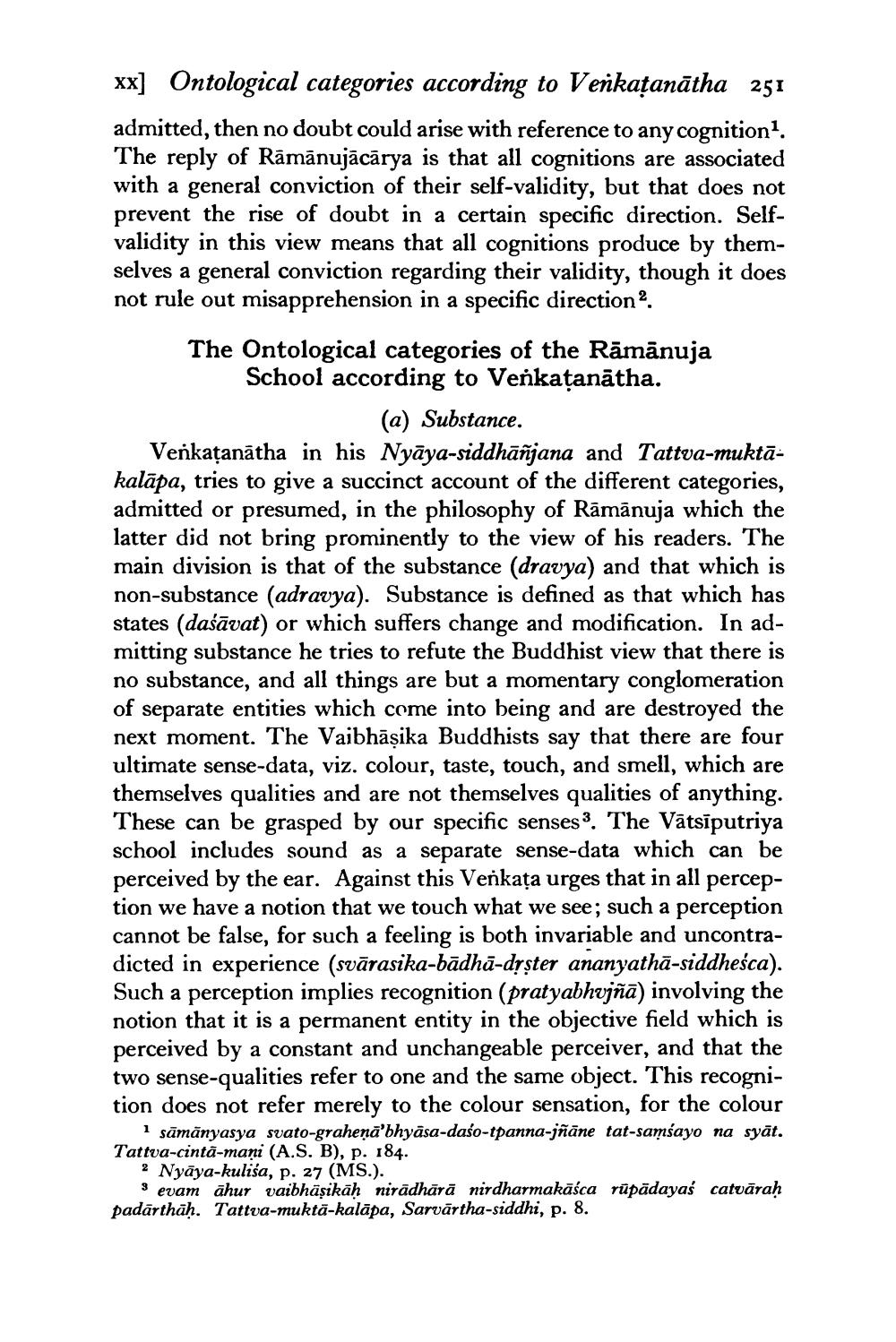________________
xx] Ontological categories according to Venkațanātha 251 admitted, then no doubt could arise with reference to any cognition".
The reply of Rāmānujācārya is that all cognitions are associated with a general conviction of their self-validity, but that does not prevent the rise of doubt in a certain specific direction. Selfvalidity in this view means that all cognitions produce by themselves a general conviction regarding their validity, though it does not rule out misapprehension in a specific direction?
The Ontological categories of the Rāmānuja School according to Venkatanātha.
(a) Substance. Verkațanātha in his Nyāya-siddhāñjana and Tattva-muktā: kalāpa, tries to give a succinct account of the different categories, admitted or presumed, in the philosophy of Rāmānuja which the latter did not bring prominently to the view of his readers. The main division is that of the substance (dravya) and that which is non-substance (adravya). Substance is defined as that which has states (daśāvat) or which suffers change and modification. In admitting substance he tries to refute the Buddhist view that there is no substance, and all things are but a momentary conglomeration of separate entities which come into being and are destroyed the next moment. The Vaibhāșika Buddhists say that there are four ultimate sense-data, viz. colour, taste, touch, and smell, which are themselves qualities and are not themselves qualities of anything. These can be grasped by our specific senses 3. The Vātsīputriya school includes sound as a separate sense-data which can be perceived by the ear. Against this Verkața urges that in all perception we have a notion that we touch what we see; such a perception cannot be false, for such a feeling is both invariable and uncontradicted in experience (svārasika-bādhā-drster ananyathā-siddheśca). Such a perception implies recognition (pratyabhvjñā) involving the notion that it is a permanent entity in the objective field which is perceived by a constant and unchangeable perceiver, and that the two sense-qualities refer to one and the same object. This recognition does not refer merely to the colour sensation, for the colour
sāmānyasya svato-grahenā'bhyāsa-daśo-tpanna-jñāne tat-samsayo na syāt. Tattva-cinta-mani (A.S. B), p. 184.
2 Nyāya-kulisa, p. 27 (MS.).
3 evam āhur vaibhāşikāh nirādhārā nirdharmakāśca rūpādayaś catvāraḥ padārthāḥ. Tattva-muktā-kalāpa, Sarvārtha-siddhi, p. 8.




